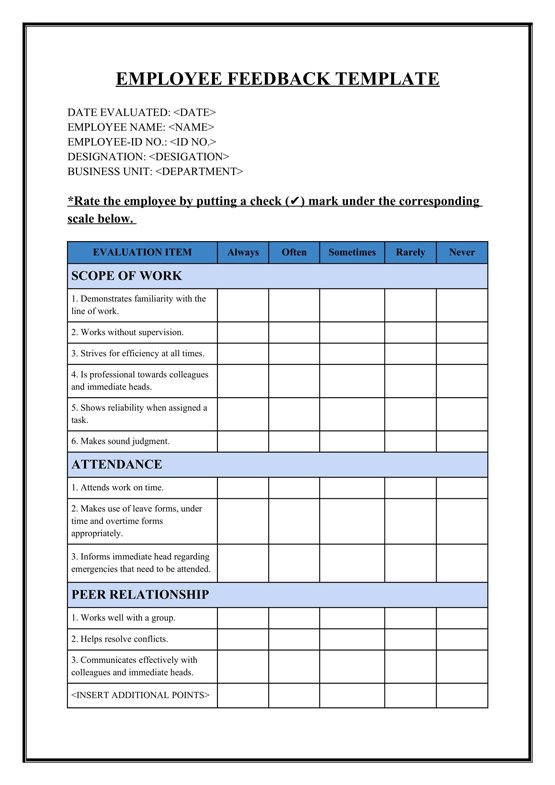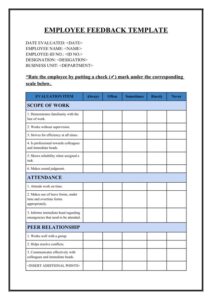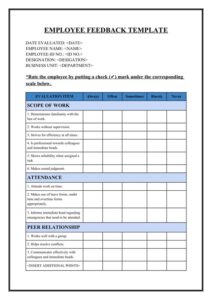Ever wondered how the most successful teams foster growth and communication? It often boils down to effective feedback, and that’s where 360-degree peer reviews shine. These comprehensive evaluations gather insights from all directions – peers, managers, and even direct reports – providing a holistic view of an individual’s performance and developmental needs. It’s a powerful tool for personal and professional advancement, helping everyone understand their impact within the organization and identify areas where they can truly excel. It transforms feedback from a top-down directive into a collaborative growth journey.

At its core, a 360 peer review survey isn’t just about pointing out flaws; it’s about illuminating strengths and pinpointing specific opportunities for learning and improvement. Crafting the right questions is crucial to extract meaningful insights that lead to actionable outcomes. Whether you’re aiming to boost team collaboration, identify leadership potential, or simply create a more transparent feedback culture, understanding the nuances of a well-designed survey can make all the difference. Let’s dive into what makes an effective template and how you can tailor it to your organization’s unique needs.
Designing an Effective 360 Peer Review Survey Template
When you set out to build the 360 peer review survey template, remember that clarity and purpose are your best friends. The goal isn’t just to collect data, but to gather actionable data that empowers individuals and teams. Start by defining the competencies you want to assess. Are you focusing on communication skills, leadership potential, problem-solving, or perhaps teamwork? Clearly outlining these areas before you even write the first question will ensure your survey remains focused and yields relevant feedback. This foundational step is often overlooked, but it’s essential for the entire process to be successful.
Once your competencies are defined, think about the types of questions that will elicit thoughtful responses. Open-ended questions are invaluable here, as they provide rich qualitative data that quantitative ratings alone cannot capture. For instance, instead of just asking “Is Name a good communicator? Yes/No,” consider asking “Describe a situation where Name’s communication was particularly effective or ineffective, and what was the impact?” This encourages detailed anecdotes and specific examples, which are far more useful for developmental purposes.
Structure your survey logically, perhaps starting with general questions and moving to more specific ones. It’s also wise to categorize questions by competency or area of focus to make it easier for reviewers to navigate and for data to be analyzed later. Consider including a mix of rating scales and open-ended questions to provide both measurable data and nuanced insights.
Key Elements to Include in Your Template
- Clear instructions for reviewers, explaining the purpose and confidentiality of the survey.
- Specific behavioral statements for rating scales, rather than vague traits, to ensure consistent understanding.
- Opportunities for reviewers to provide examples or elaborate on their ratings for context.
- A section for individuals to self-assess, allowing for a comparison between self-perception and external perception.
- Anonymity assurances to encourage honest and constructive feedback.
- Questions that address both strengths and areas for development, maintaining a balanced perspective.
Finally, test your template before rolling it out widely. A pilot group can provide invaluable feedback on clarity, length, and overall user experience. Are the questions easily understood? Is the survey too long? Does it flow logically? Addressing these points upfront can save a lot of headaches down the line and ensure a smoother, more effective feedback process for everyone involved. Remember, the goal is to facilitate growth, not to create a burdensome administrative task.
Maximizing the Impact of Your 360 Peer Review Feedback
Collecting feedback through your beautifully crafted template is only half the battle; the real value comes from how that feedback is delivered, interpreted, and acted upon. A common pitfall is to simply hand over the results and expect magic to happen. Instead, focus on creating a supportive environment where individuals feel safe to receive and discuss their feedback. This often involves trained facilitators or HR professionals who can guide the conversation and help individuals make sense of the diverse perspectives.
Encourage individuals to look for themes and patterns in their feedback rather than getting caught up in isolated comments. Is there a consistent message about communication, leadership, or collaboration across multiple reviewers? These recurring insights are usually the most reliable indicators of strengths or areas needing attention. It’s also important to remember that feedback is a gift, even when it’s challenging to hear. It provides an external mirror, reflecting how one’s actions are perceived by others.
Once feedback is understood, the next crucial step is developing an action plan. This transforms insights into tangible steps for growth. An effective action plan should be specific, measurable, achievable, relevant, and time-bound (SMART goals). It’s not enough to say “I’ll improve my communication”; a better goal would be “I will practice active listening during team meetings by summarizing what others have said, starting next week for the next month.”
- Schedule dedicated time for feedback review and reflection, ideally with a coach or mentor.
- Identify 1-2 key areas for development based on recurring feedback themes.
- Collaborate with a manager or mentor to set SMART goals for these development areas.
- Seek out resources or training opportunities relevant to the identified growth areas.
- Regularly check in on progress and adjust the action plan as needed.
- Recognize and celebrate small wins along the way to maintain momentum.
Finally, remember that 360-degree feedback is an ongoing process, not a one-time event. Regular check-ins and follow-ups reinforce the commitment to growth and allow individuals to see the impact of their efforts. Creating a culture where feedback is continuous, constructive, and celebrated is key to unlocking the full potential of your team and fostering an environment of continuous learning and improvement. This commitment to ongoing development ensures that the insights gained from the survey translate into sustained positive change.
Utilizing a well-structured peer review process is a game-changer for any organization committed to fostering employee development and high-performing teams. It provides a unique lens through which individuals can view their professional impact, offering diverse perspectives that single-source feedback simply cannot. By focusing on thoughtful question design, clear objectives, and a supportive feedback culture, you empower your people to understand their strengths and actively work on areas for growth.
Ultimately, the power of this comprehensive feedback mechanism lies in its ability to transform self-awareness into actionable improvement. It builds stronger relationships, enhances communication, and identifies future leaders from within. When implemented thoughtfully, it becomes a cornerstone of talent development, driving not just individual success, but the collective success of the entire organization.


